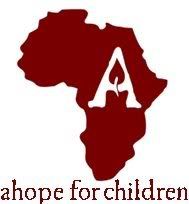The Process
Mary-Mia asked a while ago about how the adoption process works for Ethiopia. Since I know several people who read this are adopting from other countries, I thought it'd be nice to give you all a run down on the process. I'm sure that a lot of this is similar for all international adoption so please bear with me as I lay everything out for those not in the adoption process. For all those who are or have adopted from Ethiopia, please let me know if I leave anything out!
Step 1 - Apply to placement agency
There are currently 8 agencies that I'm aware of that work in Ethiopia
Adoption Advocates International(AAI)
Adoption Associates, INC. (also AAI)
Americans for African Adoptions (AFAA)
Children's Home Society & Family Services (CHSFS)
Christian World Adoption (CWA)
Dove Adoptions
Gladney Center for Adoption
Wide Horizons For Children (WHFC)
Step 2 - Homestudy
After the placement agency accepts your application, you will then need to find a homestudy agency. If you live within a certain distance of your placement agency they will most likely do your homestudy also, if not, then you'll need to research and find a local agency to do it. This process is very involved and includes, background checks, medical exams, police clearance letters, finical records, and many visits with a social worker to determine if you and your family are able to care for an adopted child. When adopting a child of another race, the SW with also be looking at how prepared parents are for the challenges associated with trans-racial adoption. Some HS agencies require parents to attend classes and complete certain educational requirements. This process can take anywhere from one to several months to complete.
Step 3 - USCIS Application
After the homestudy is complete and has been approved by the placement agency, you can submit the I-600A application to USCIS. This will include a hefty fee, a copy of the homestudy, and require that you be finger printed yet again. The outcome of this application will hopefully be receiving the I-171H approval to bring adopted child into the country. This can take anywhere up to 6 months to receive depending on how fast things are processed at your local USCIS office.
Step 4 - Assembling the Dossier
This included gathering all the documents needed by the Ethiopian government to process your adoption on their end. Requirements for this vary greatly by placement agency. Most of the documents will need to be notarized and certified copies of some documents must be obtained. Letters of intent to adopt, photos of home and family, copies of birth certificates, tax returns, medical forms, and a copy of the homestudy are all things included in the dossier.
Step 5 - Waiting for referral
When you officially are added to the wait list will depend greatly on the policies of your agency. Some agencies allow you to be waiting for a referral before you have received USCIS clearance. The idea being that since a referral can take up to 6 months(for an infant girl), you can be waiting for a referral and waiting for your immigration approval at the same time. This can greatly shorten the wait. Other agencies require USCIS approval before the dossier is submitted to Ethiopia and the wait begins. While this may take a bit longer, it does guaranty that the family will be able to bring the referred child home and eliminated the risk of getting a referral before getting approval and having to hold up the adoption while waiting on the USCIS. (This is something to talk about during your agency interviewing process)
Once on the wait list, the process can take anywhere from a few weeks to 6 months depending on the kind of referral you are hoping for. Infant referrals take the longest with infant girls being on the high end of the time-line. Children of all ages are available for adoption and sibling groups are very common. When a child comes into the care center, he is medically assessed and then referred to the family highest on the wait list who matches his medical condition and age. (All children are tested multiple times for HIV and no child tested positive will be referred unless the family specifically requests it) A family that won't take any medical needs will be passed over on the list if the child doesn't match their preference. This means that the wait time can be very uncertain.
Step 6 - Referral
All the children referred are under the care of the orphanage or care center maintained or associated with your placement agency. When you are matched with a child, you will receive a call either from the agency rep, or your homestudy SW. They will have basic information as to the child or children's name, age, and basic medical condition. Then they will send you the child's file which will have more medical info, photos, and anything known about the child's history. It is recommended that you have the child's medical record looked over by a physician and there are several doctor that specialize in international adoption medicine that you can email the info to for assessment. You have several days to either accept or refuse the referral. Most agencies will only allow you to refuse a referral on a medical basis, any other reason for rejecting it may jeopardize your adoption.
Step 7 - Adoption in Ethiopia
After the referral has been accepted, it'll be 6 to 8 weeks until you can travel to pick up the child. Those weeks are used to complete the Ethiopian adoption process by proxy. Before you travel you will receive your child's new Ethiopian birth certificate with you listed a parents. Once the court process is complete, your agency will set up a visa appointment with the US embassy in Addis Ababa. The date of this appointment will determine the dates you travel to pick up your child.
Step 8 - Travel
Travel to Addis Ababa requires lots of preparation. Some of the recommended vaccines may require that you start the series several months before travel. The CDC has a list of recommended vaccines for traveling to East Africa. The scariest vaccine may be yellow fever, which is not required in traveling from the US to Addis Ababa, but is recommended it you plan to travel outside of the city. Malaria is also not prevalent in the capital city due to it's elevation, but is something to be aware of. The main worry of most travelers is parasites. It is quite common to come home with one if you don't carefully follow the travelers guide for drinking and eating while in a foreign country.
Most family travel to Addis Ababa for about a week. Several of the agencies have incorporated accommodations for adopting families within the care center. This means that adopting parents have the option of staying at the care center and having access to the children all the time. This is ideal for younger children who will need time to adjust. Other families choose to stay in nearby hotels, traveling to see the children in the care center for the first couple of days and then taking them back to the hotel with them after a period of adjustment.
It has become more and more common that you maybe able to meet with relatives or even a birth parent of your new child while your are in Ethiopia. If you can, this is a wonderful opportunity for you and your child. Many parents have been able to get photos of family and a history for their children. You may have to travel out side this city to meet these family members and usually you will not know in advance if such a meeting can happen. Most of the agencies try hard to help families meet birth relatives if possible because they know how important this information can be to the children.
For those parents who can not travel for whatever reasons, Ethiopia is one of the few countries that will allow you to have your child escorted back to the US. This may add several weeks and up to 4 months onto your wait though.
Step 9 - US Adoption
Because the Ethiopian adoption is processed by proxy and the parents do not meet the child in person until after it is complete, re-adoption in the US is necessary to finalize the adoption and give your child US citizenship. This is usually a simple process and the time it takes varies by State of residence.
Step 10 - Post placement reports
Ethiopian government requires that you submit post placement reports for your child done by the homestudy agency, at 3, 6 and 12 months after the child arrives home. They also require a family post-placement report, once a year, close to the anniversary date of arrival with the new family, until the child is 18. At 18 the Ethiopian government wants a final report. Each report needs to have 4 to 6 close-up photos of the child.











 Referral Picture 6/21/07
Referral Picture 6/21/07
2 comments:
Great info Mandy -- thank you!
It's so interesting to read, I didn't know the process was so similar to the China adoption one. It sounds like adoption from Ethiopia mirrors our experience much more closely than adoption from other countries (like Korea, Vietnam, or Russia).
Thanks for the info! I am always curious as to how other processes work. Russia is so different than all the others.
Post a Comment